The Crisis and Creativity Symposium, designed “to reinvigorate the conversation between the Arts, Humanities, Social Sciences, and Sciences,” started today (Wednesday July 22nd) as guests from around the country gathered at CSU. Organized by CSU professor Dan Beachy-Quick and made possible with funds from the Monfort Professorship generously awarded to Beachy-Quick, the symposium is focused on bringing together artists, writers, scientists, and scholars from multiple fields, not simply to present ideas already formed, but to gather together and consider new approaches to dealing with today’s most pressing difficulties. Of the symposium, Dan Beachy-Quick says, “Our hope is to re-integrate the Arts into the largest concerns facing us today, from ecological disaster to social injustice, holding to the old belief that in the arts we have the longest, most comprehensive record of what it is to be human and face situations where our humanity is threatened—often by our own hands. We’re concerned with the ways in which creativity, be it in words or in making, experiment in lab or on page, are required to have an open, honest, attentive engagement with the world.”
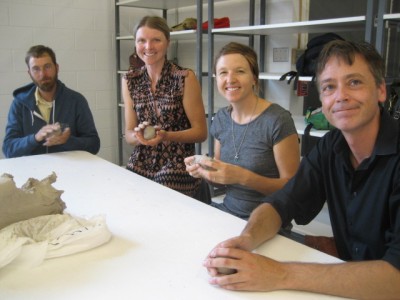
The guiding metaphor for the symposium is the idea of the home:
“Begin with the house. The idea of it and its basic elements: foundation, threshold, wall, roof. Within the shelter of the home our most basic human dramas—from the philosophical to the personal, from the social to the private—unfold. The house shelters us from the wilderness of the world, refuge from those brute forces whose vitality we depend upon even as we shrink back from their power. Against, or within, the large social structures by which civilization functions, the house provides a sanctuary of more fundamental laws, those of family, and of the privacy of one’s own life separate from the larger concern: place of thought, creativity, procreativity, sleep, and the thousand daily cares that make up the mingled yarn of human life.
But the house is also that symbol that hovers between our private selves and all that exceeds us. And when crisis occurs—“crises” being those events that obliterate the opposition between myself and others, the private and the public, and in which every distinction socially, politically, environmentally, is threatened and begins to break down—the home is also the symbol of that damage. One might say: the walls also come asunder, and where the refuge of home once was, a strange light leaks through the cracks, and others can peer in, just as you can peer out.”
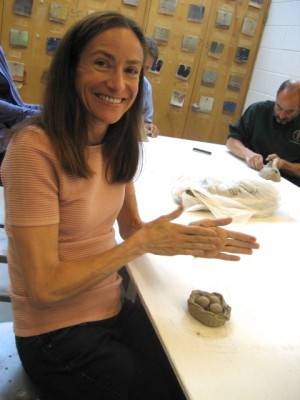
The day’s activities were centered around this symbol of the house and its many meanings. The morning session introduced participants to some of these ideas and was followed by a “Maker’s Space” session in the afternoon. This session was led by Michael Swaine, a core member of an artist collective called Futurefarmers, and Del Harrow, a sculptor and Assistant Professor of Art at CSU.
Participants were first asked to grab a clump of clay and to start thinking about the physical act of touching it and molding it. Del explained that the use of materials and the actual bodily experience of creating something can aid in thinking through things; the material becomes an extension of the mind.
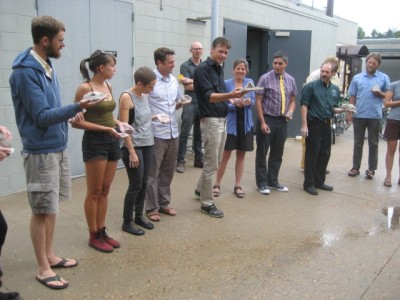
Participants were then asked to design something to represent their idea of “shelter” or “home” using their clay. The range of creations was truly astounding from beehives to trees to strings of clay woven together. Each participant was also asked to come up with one word that would represent his or her creation. After everyone was done, participants stood in a circle with their creations and sequentially stated their word. A spontaneous poem emerged.
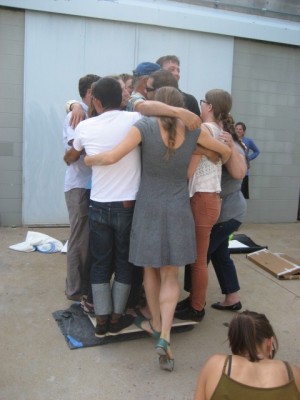
This poem was then translated onto the sidewalk using chalk after the participants rearranged themselves into relational clusters. Later this sidewalk poetry was translated once again into another format using printmaking. Swaine and Harrow were able to use computer technology to create a giant stamp of the sidewalk poetry. Ink was rolled over the stamp, and about 10 people had to stand on the stamp to press the ink onto the page. It was truly a collaborative creation!
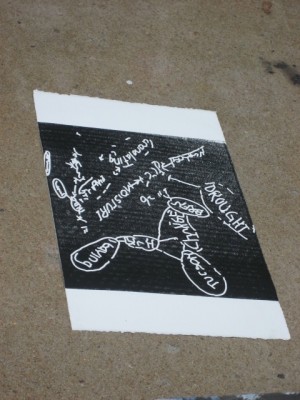
Much of the afternoon was also spent in collaboration with smaller groups as people worked together to synthesize their ideas about what home or shelter meant to them. Participants were given sticks, tape, cardboard and clay to build their visions, and the creations were even more spectacular this time. With two more “Maker’s Spaces” in the coming days, it will be fascinating to see what more will happen!
Click the following link to listen to an audio package featuring Michael Swaine and other participants at the first Maker’s Space session: https://soundcloud.com/crisisandcreativity/makers-space-1 (the audio clip was compiled by Kylan Rice).

The day ended with a poetry reading by Brenda Hillman in the Morgan Library Courtyard. Brenda is the author of nine collections of poetry: White Dress, Fortress, Death Tractates, Bright Existence, Loose Sugar, Cascadia, Pieces of Air in the Epic, Practical Water, and Seasonal Works with Letters on Fire. Hillman read poems from her “Air,” “Water,” and “Fire” books and also some poems that were inspired by her activism. Part of Hillman’s activism included attending sessions of Congress and doing things to make the senators and representatives uncomfortable as a way to bring attention to the unjust wars in Iraq and Afghanistan. Although she has lost much faith in our legislative system and no longer makes these excursions to the capitol, she does use “moaning” as another form of protest. (Yes, moaning). For instance, she publicly moans every time she fills her gas tank as a way to make people uncomfortable and to make them think about their choices.
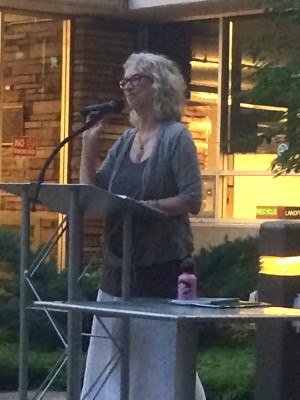
Hillman’s poetry was lyrically charged, inspiring, and simultaneously sad and humorous. More than anything, she offered a very interesting perspective on creative approaches to a society in crisis, and it was the perfect way to wrap up the first day of the symposium.
For more information on upcoming events in the symposium please visit the symposium’s website: http://crisisandcreativity.org/